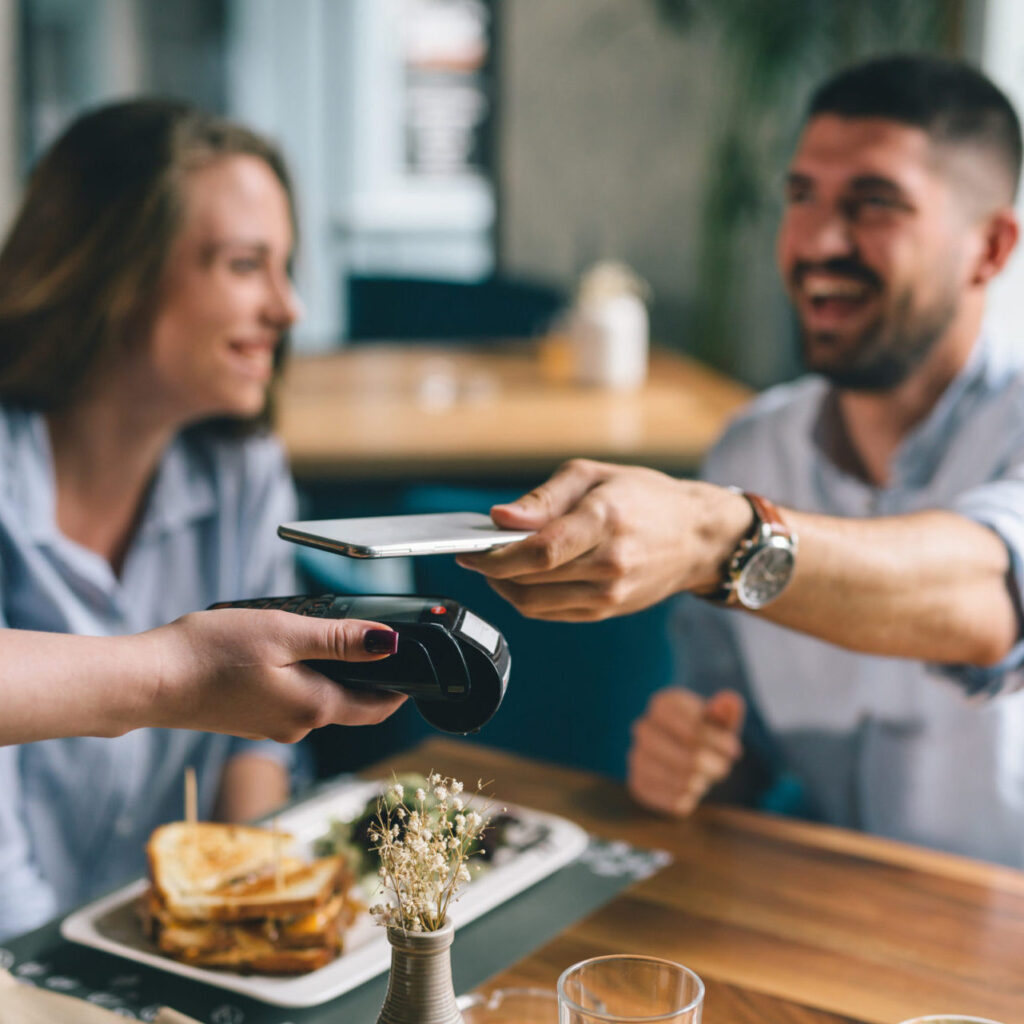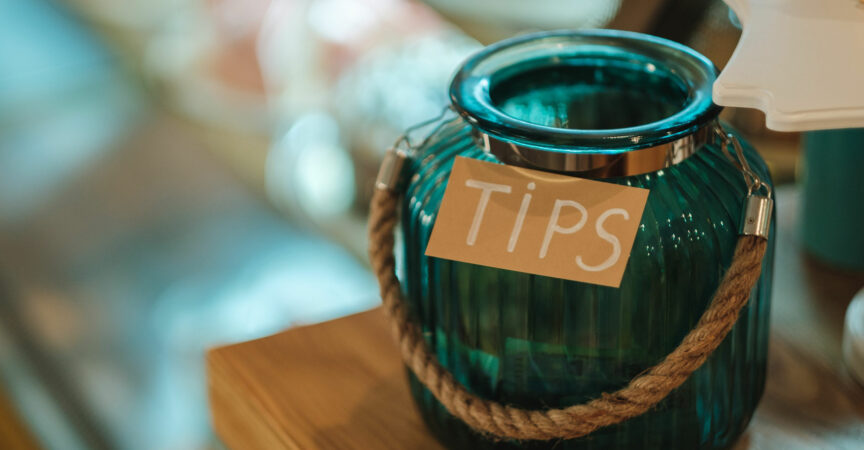Tip-outs: How even the most transparent tip-out processes can expose operators to tax liability
In 2020, a popular restaurant in Nova Scotia was assessed by the Canada Revenue Agency (CRA). The CRA found that a certain amount of the servers’ electronic gratuities collected between 2015-17 were subject to EI and CPP deductions, for which the employer was liable. In 2020, the operator took the case to Tax Court and lost. The restaurant appealed, taking the case to the Federal Court of Appeal which, in a written decision in August 2022, found in favour of the CRA. They ruled that “due-backs” were in fact “controlled tips,” and therefore were “contributory salary and wages of the employee paid by the employer.” In short, the restaurant’s tip-out system was classified as a controlled tip system, which meant the gratuities collected for staff disbursement were considered insurable earnings and subject to CPP and EI deductions under the Employment Insurance Act.
The potential liability for operators lies in the gap between the CRA interpretation of controlled tipping versus direct tipping systems, and the realities of how gratuities are collected in contemporary times. According to the CRA, “controlled tips” refers to “tips that an employer controls or possesses and then must pay to the employee.” It then follows that electronic tips are “possessed” by the employer based on the reality that, for these gratuities to be paid out to employees, they must be electronically received and held in the employer’s account, however temporarily. CRA does consider electronic gratuities briefly held by the employer and paid out within a prescribed timeframe cited as “at the end of each shift” as meeting their criteria for a direct tip.
To avoid liability, restaurants must have tip-out system that meets the definition of “direct tipping”, which the CRA defines as follows: “Direct tips are paid directly by the customer to the employee. The employer has no control over the tip amount or its distribution. The employer is merely a conduit for the tip from the customer to the employee.” There is a lot of room for interpretation and error between controlled and direct tips.

“What is needed is to get CRA to provide the industry with further clarification around “direct tip” versus “controlled tip”, says Richard Alexander, Vice President Atlantic at Restaurants Canada. Alexander has been working with government counterparts to push for updates to CRA definitions drafted in a time when the majority of transactions used cash.
Now, in a nearly cash-free transaction system, electronically remitted gratuities are the norm. “Electronic gratuities are the same as cash gratuities,” Alexander asserts. “The problem is the interpretation. We’re working with definitions from a time when everyone was carrying cash in their pockets. That’s the representation Restaurants Canada has made to the Minister of National Revenue. Treating electronic gratuities the same as cash is common sense to people, and its common sense to the minister, so we’ve asked for a little bit more guidance and leniency when it comes to this issue.”
The problem is the interpretation. We’re working with definitions from a time when everyone was carrying cash in their pockets. That’s the representation Restaurants Canada has made to the Minister of National Revenue. Treating electronic gratuities the same as cash is common sense to people, and it’s common sense to the minister, so we’ve asked for a little bit more guidance and leniency when it comes to this issue.
– Richard Alexander, VP Atlantic,
Restaurants Canada
James Rhodes, Canadian taxation lawyer, has been working on the issue with Restaurants Canada to help operators understand compliance and liability as relates to their tip-out processes. He found himself at the centre of the debate based on his work with larger multi-unit restaurant brands on taxation and tip-out processes and because he, “just likes the topic.”
Rhodes estimates about 60 per cent of restaurant gratuity systems in Canada are not in full compliance with what the CRA wants. “Most restaurants are unaware they have a problem and that they might be held liable for CPP and EI contributions—not only as the employer, but as the employee—on gratuities received. In the case of the Nova Scotia restaurant, was a $100,000 problem and that was just three years. That was also three years ago and, if they hadn’t made any changes, that’s a $200,000 problem—and that’s one restaurant out of a chain of restaurants. So, the problem is that most restaurants are unaware of potential liability should they be audited by the CRA and found not to have a direct tip system. They think they have it, but they actually don’t.”
“If you look at the CRA’s guidance, it’s two pages—just two pages to guide someone between a $100,000 problem and a zero dollar problem. I always refer to it as “walking a tightrope.” If you get one thing wrong the entire system defaults to being considered a controlled tip system, and there’s your liability. A liability you didn’t think you had.”
Rhodes notes many of the perils are rooted in fair-minded, progressive and transparent systems restaurants put in place, like employee gratuity committees. Employees select employee representatives who manage and distribute tips transparently between all eligible employees, without the operator having to get involved or manage the system. “Some restaurants will say, “Hey, we’ve got an employee gratuity committee.” I say, “Great! Tell me about your payout.” Then they say, “Well, we collect the money, and every two weeks we give them a cheque.” And that’s when I let them know that they don’t have a direct tip system; they have a controlled tip system. While the employees have decided the allocation of the payout, which is an important criterion for CRA, the required payout has occurred too late, in CRA’s opinion. The result of the two-week payout is that CRA believes the owner has owned the payout for two weeks, and therefore controlled it, and is liable for CPP and EI deductions. Getting one thing wrong out of a list of all that’s necessary will define a system as controlled and expose a restaurant to sometimes massive liability.”
Rhodes compares the scenario to a 1994 Nicholas Cage movie, It Could Happen to You. In the film, Cage is short the cash to tip his server. Instead, he tips her by tearing his lottery ticket in two and giving her half. “Imagine that lottery ticket was a million dollars, and Nicolas Cage had given it to 30 people working in that restaurant, and that restaurant happened to have a controlled tipping system. That employer would be liable to pay the EI and CPP on that million dollars to those employees. Even though the employer has no control and derives no benefit from that gratuity, that sleeping liability could end the business.”
Alexander notes there is no consistent method restaurants use to manage their tip-outs. They have systems in place that work for their operational scenario and employee group. “I took 60 calls after the first webinar. After the second webinar, I took probably eight to 10 calls. A lot of the calls are similar. If operators listen to the webinar, they’ll understand what they have to do. But all the same, operators may have a specific situation and they want an answer to, ‘Is this okay?’, ‘Am I gonna get in trouble by doing this?’, and there’s no hard and fast answer. I just got back from Halifax and the three operators I spoke with about this issue are all going and getting cash—sometimes $20, 30 or 40 thousand dollars in cash—and putting it in a safe to use that to pay out. That’s a high risk and unsafe solution. Also, most banks to have a lot of cash on hand anymore, so it’s not necessarily practical or reasonable either.”
Rhodes agrees. “Where we are now, the solution for every restaurant is a cash float. For higher-volume restaurants, that’s a bigger problem. They have to carry a lot more cash. CRA says that if you pay out all tips, cash and electronic, in cash by the end of the shift they will view that as a direct tip. But, what if it’s two or three o’clock in the morning at the end of the shift? CRA does allow next-day tip-outs, but in “extraordinary circumstances.” A lot of restaurants think that’s okay, but the Nova Scotia restaurant that just lost at the Federal Court of Appeal was paying out tips the next day by electronic funds transfer, and it wasn’t okay. So, right now, the only solution I can tell people will meet an auditor’s criteria is they have a cash float.”
The approach that Restaurants Canada has taken is focused first and foremost on education. We’re educating members through the webinars now, and also working on a tipping best practice document to share with members. It’s an education and risk reduction strategy for now. That should help the immediate concerns around liability in the industry. But but moving forward, I think we need a permanent change in the CRA’s guidance when it comes to electronic tipping.”

Restaurants Canada estimates about 90 per cent of all gratuities are collected electronically. If only 10 percent of tips come in as cash paid directly to employees, how do operators completely avoid all tip-out liability? According to Rhodes, for now, the only 100 per cent compliant solution is a cash payout at the end of each shift. “At the end of the day, the real legal answer for these cashless times is that until someone gets dual payment processing into market, there is some liability for restaurants. If that gratuity amount went to a separate bank account that was owned by an employee gratuity committee, that is the end of every restaurant’s worries. And so, in the first presentation I did for Restaurants Canada, I was talking about the need for someone to develop dual processing technology for the industry because it is the solution to every restaurant’s problems. That would be my Christmas wish.
In the first presentation I did for Restaurants Canada, I was talking about the need for someone to develop dual processing technology for the industry because it is the solution to every restaurant’s problems. That would be my Christmas wish.
– James Rhodes, Taxation Lawyer
WATCH THE FREE WEBINAR HERE
Federal Court of Appeal Ruling: Tips, source deductions, and how to protect yourself from liability
Originally Presented: October 6, 2022
Restaurants Canada and James Rhodes, BSc, LLB, of Taxation Lawyers in conversation on tip-out
systems that protect your business from this liability!










Tip tax liability question./solution.
If restaurant was to do a cash back to the employees at the end of each shift (return or cash back onto employees debit) would that keep the restaurant compliant?